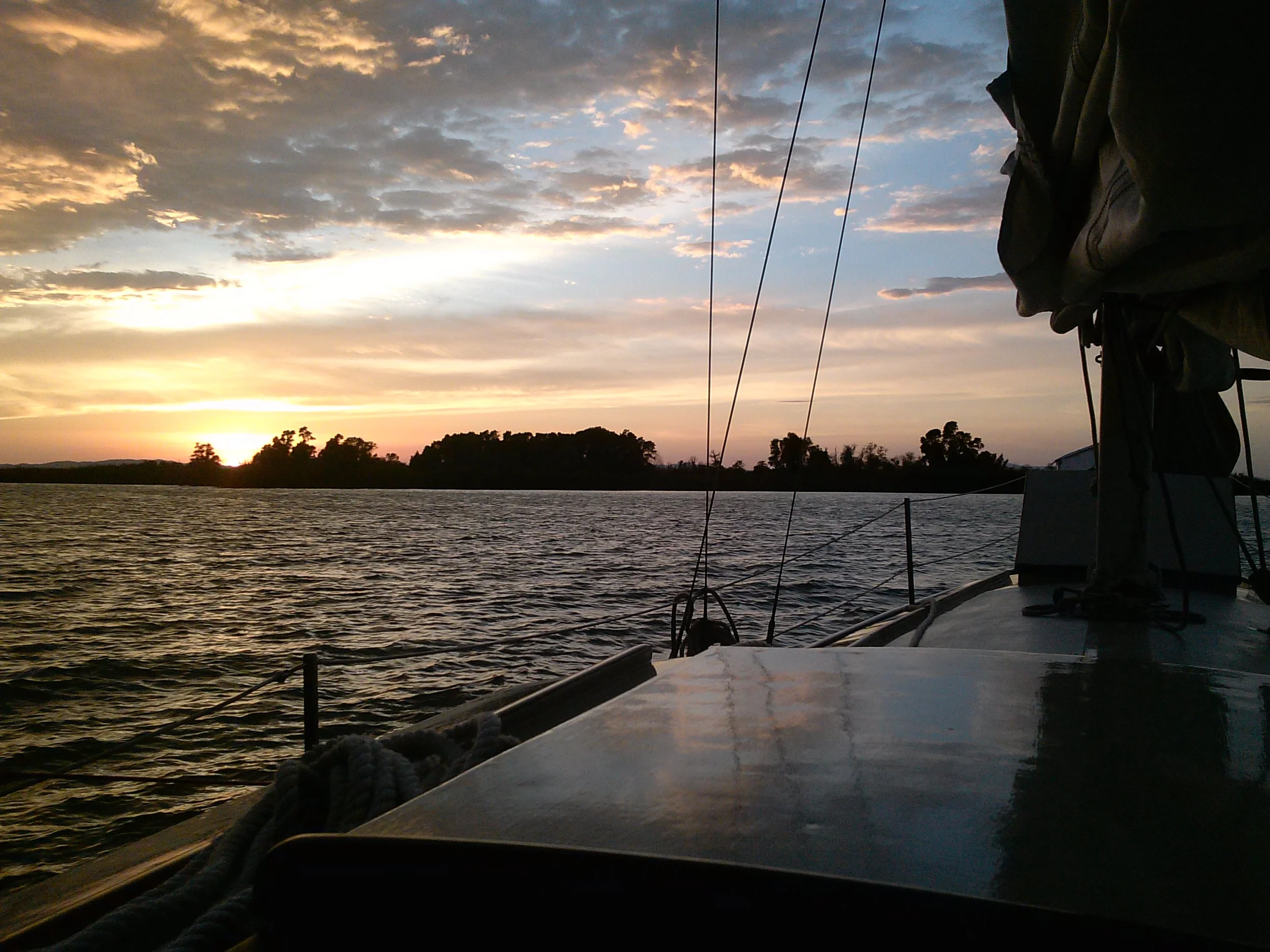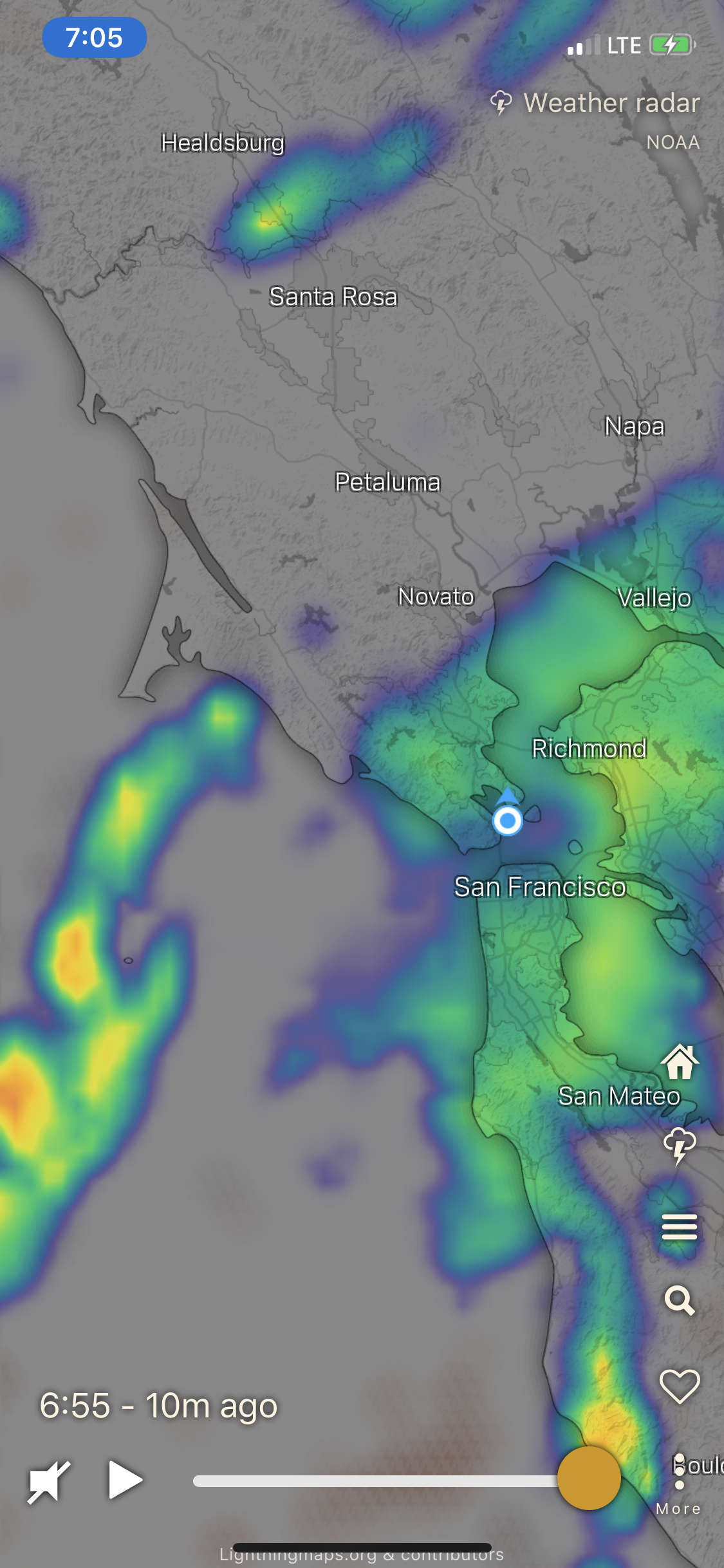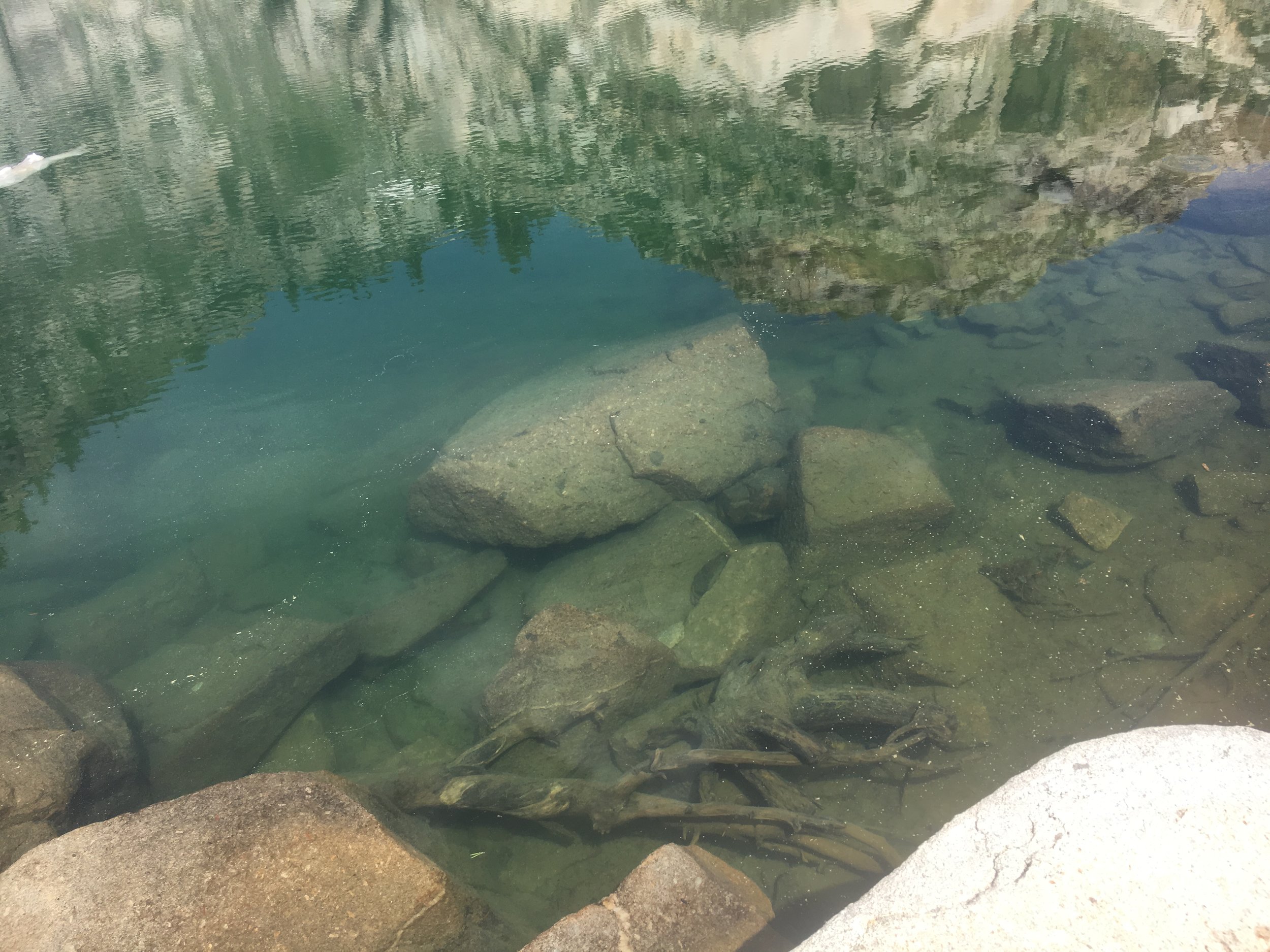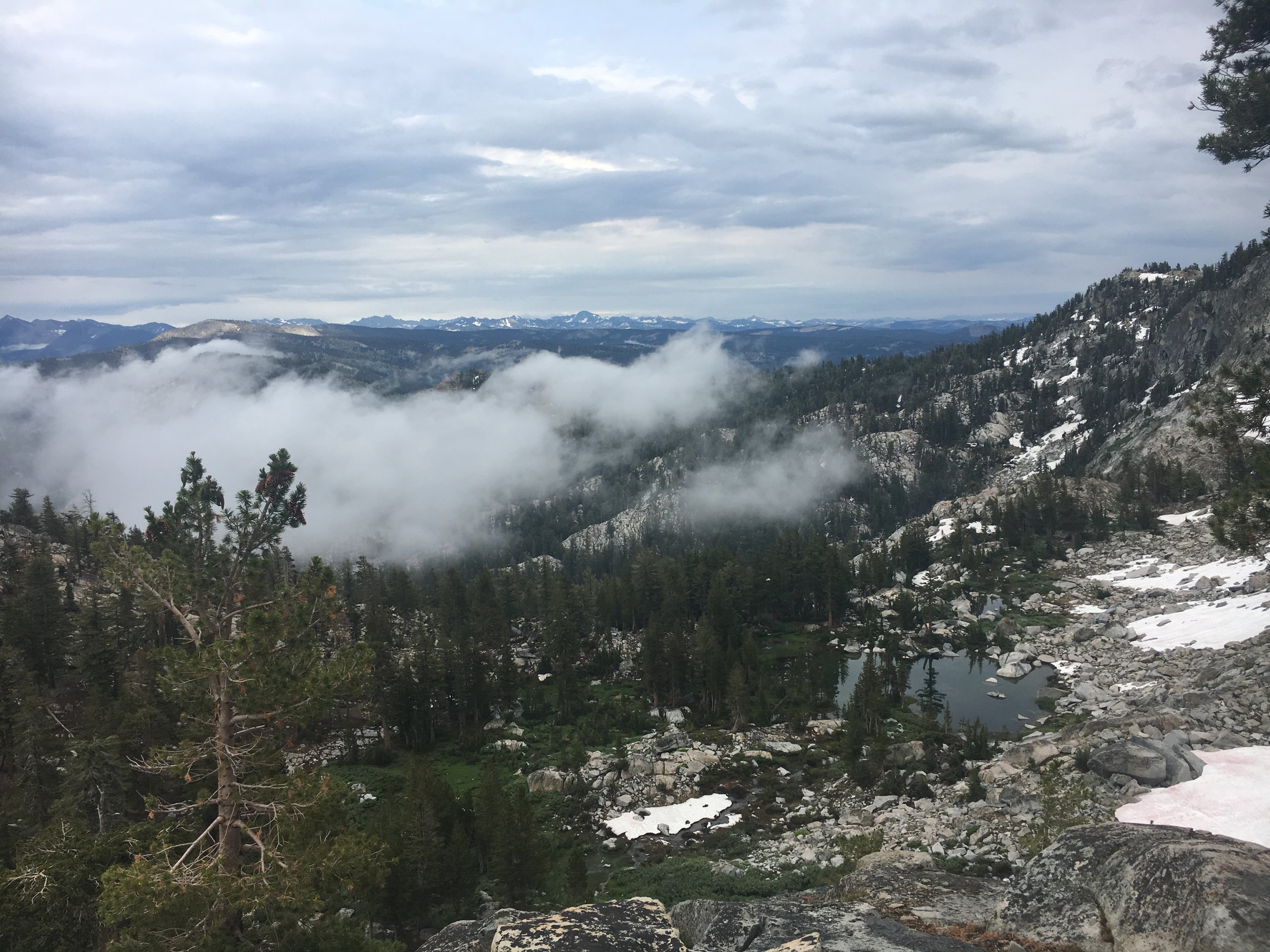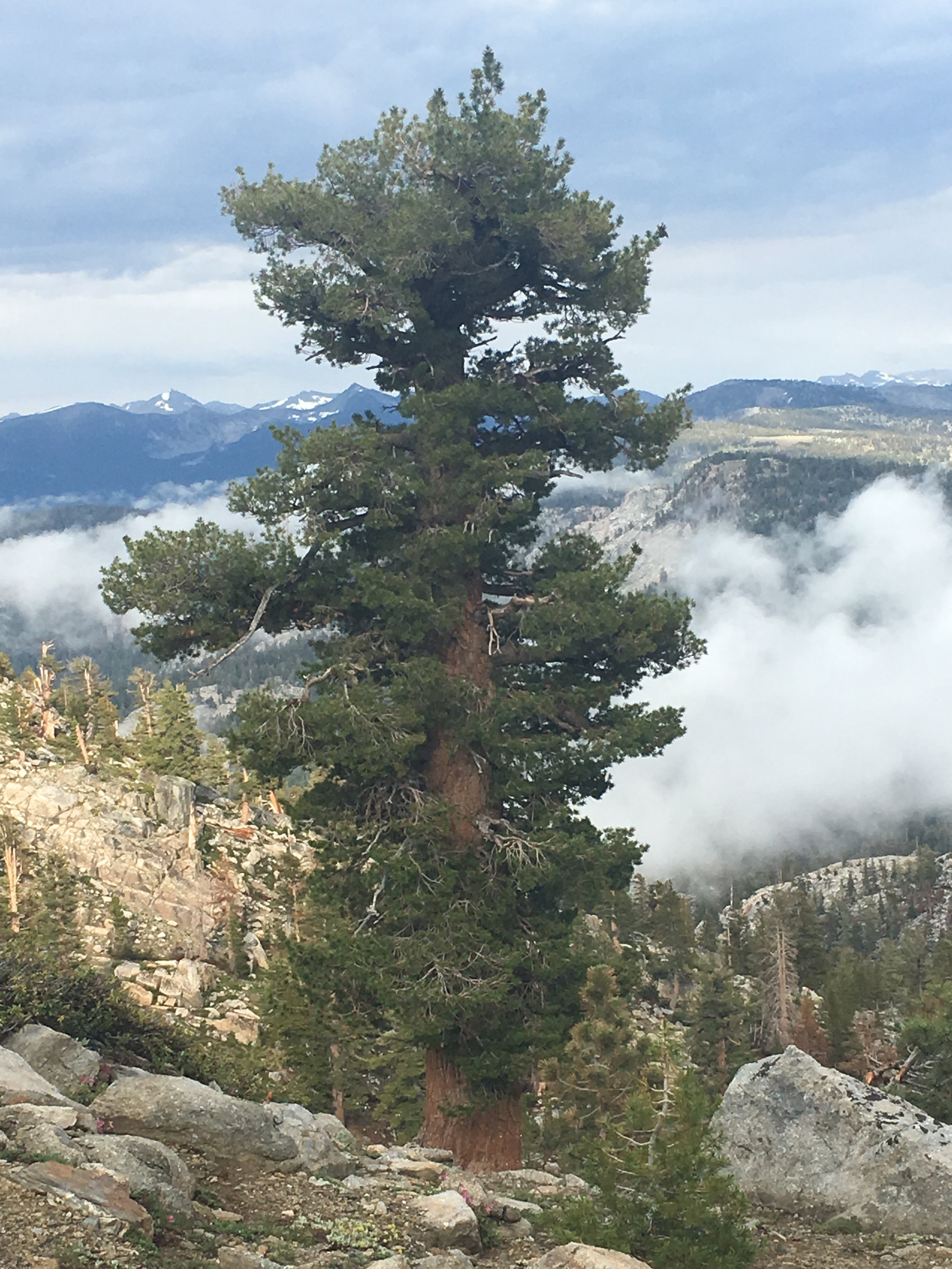A fantastic day of sailing and a rude awakening
/Saturday Aug 15 was a fantastic sailing day on San Francisco Bay! While the Bay Area and inland valleys experienced a dramatic heat wave, the cool Pacific breezes slowly built over the course of the day without any fog. That’s like having your cake and eating it too! The heat wave was caused by high pressure over the Nevada and the Southern CA deserts that trapped air in the CA central valley and along its coastal regions. While the high-level cooling effect of the Pacific sea breeze was shut down, the surface winds were very strong on SF Bay by mid afternoon. Well timed with the tide, the wind chop in the bay was reduced, making for relatively flat waters. The land was so warm that it also heated the breeze so that the winds in the eastern bay were warm! Tropical! People were sailing in t-shirts! No shirts!
Heading out of Richmond toward Tiburon. Down right Tropical!!
But 1000 miles away trouble was brewing. Moist air from a tropical storm Fausto off Mexico was being funneled north up the coast. While there were predictions for some thunder and lightening, nothing warned of what was really to come. I had experienced such weather oddities in SF before. Usually later in September, but always rather mild. I basically forgot about it.
I sailed into the evening and then decided to anchor off of Sausalito to rest a bit, have some dinner and maybe head back to the dock or just stay the night. I’ve done this several times before. It’s an OK anchor spot, a bit rolley, but has good holding ground, so easy and low stress. The evening was delightful. My choice to anchor and eventual stay was confirmed by several other boats that were doing the same, including a Coast Guard Cutter. I eventually went to bed.
At anchor off Sausalito in the company of the super yacht Attessa (226 feet), a Coast Guard Cutter, and others.
A little bit before 4 AM I was woken by the howl of the wind. Sudden and violent gusts were rolling the boat. Thunder then lightening. I immediately knew this was the predicted thunder and lightening, I was shocked at the violence of the squall. I had that awful feeling that you get when you know you have made a terrible mistake, but before anything bad has happened, like a mix of dread and shame.
I poked my head out of the boat and was confronted by howling wind, choppy waves, and far off lightening. When I sail Nirvana, with all the sails up in 20 knots of wind, she will heal over till the rail is in the water. This is normal for a sailing boat. I had no sails up and one gust healed the boat over until the rail was almost in the water. I reached a quick state of mental resolve – this could be it for the boat, nothing much for me to do but protect myself.
I pulled a few cushions and other items out of the cockpit to create a clear working space. I turned on the engine. I went below and put on my foul weather gear, my sea boots, a head lamp, my life jacket and my sailing gloves (to protect my hands). I turned on all the navigation lights and cabin lights and the radio. I have a hand held radio as well, and I turned it on and snapped it into one of my pockets. I grabbed a knife and pocked it. I went up on deck.
I took stock – nothing was broken yet, the engine was running well. I observed my position and the boat did not seem to be dragging anchor, yet. Lightening was now closer, over SF and the sky above me was black. I went forward to the bow and added some tie downs to the jib sail, and then to the main sail, both of which were trying to break loose in the wind. The boat was aggressively surging back and forth on her anchor, like a wild horse at the end of a rope.
When anchoring, I had set the anchor well and put out about 80 feet of anchor line, about 4 to 1 in the 20+ feet of depth below the boat. The first 20 feet of my anchor setup is heavy chain. Since I only anchor casually in the Bay, and I don’t have an anchor winch (a windless), this arrangement is most manageable. But it is not ideal for such conditions. One would want more chain, a windless and just a bit of rope as a snubber.
So my first strategy was to try and let more anchor line out. The more “scope” the lesser upward angle and upward pull at the shaft of the anchor which is like a plow, so if it is pulled along the bottom, straight and level, it should dig in. From the past, I knew that the bottom here was pure heavy mud, no sea grass (which can clog the plow). So I felt good about that.
The one part of my setup which is a bit over built is the anchor itself. I use a 35 pound CQR, which is substantial. I went to the bow to see if I could let out more scope, but the anchor line was so taught on the cleat, I couldn’t easily unwrap it. The line itself was as hard as steel. So I inspected it where it went over the bow, and luckily it was staying on the roller and not chaffing against anything. But I reasoned that it was likely to snap before long.
So I prepared myself to have to maybe cut the boat free if the anchor started dragging, or the line snapped below the water and the boat got too close to the pier where the ferry dock is. Without an anchor winch, I would not be able to pull the anchor up to reset it in these conditions.
Enough said….
But it held. The radio crackled with the voices of others. Mostly the anchor-out community in Sausalito’s Richardson Bay. Boats were dragging and generally being tossed about. The water is shallow there and it was less protected than where I was, so the waves were bigger.
The Cost Guard cutter anchored near by came to life and had all its lights on, but remained tied to the fixed buoy they use.
Conditions slowly mellowed and I let out more scope till I had at least 7 to 1 and went below and got my phone and brought up the weather app Windy.com. It has a weather radar mode, so I could see the squalls coming up the coast and that they were at least spread out and not continuous. It was a big relief. It seemed manageable. I made some coffee and grabbed a bite to eat knowing that with such squalls, the wind often backs around and will come from opposite directions. That was a worry. The wind had been mostly from the South and West, but if it clocked to the East, it would swing the boat and put about 50 yards between me and the rocky shore.
I settled in and watched the fantastic lightening storm over SF and the East Bay.
As dawn progressed, the tide was favorable, and I saw there was a big break in the coming squalls, so I pulled up the anchor and headed back to the dock.
I put the auto pilot on and sat up on the bow and watched the squall lines in the south bay march along and the lightening continue to light up the sky. I got back to my dock safe and sound around 9:30 AM. A rude awakening, but a happy ending.
PS: Sadly the lightening started many fires and some of them turned into real infernos, destroying homes, some State Park facilities, historic redwoods and causing some related deaths. As of Aug 28, some of the fires continue to burn.
On the way back to Richmond, rain squalls line up in the East Bay.
